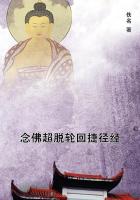The value and originality of Myron's contributions to the progress of Greek sculpture were so great that he left behind him a considerable number of artists devoted to his methods. His son Lykios followed his father closely. In statues on the Acropolis representing two boys, one bearing a basin, one blowing the coals in a censer into a flame, he reminds one of the Ladas, especially in the second, where the action of breathing is exemplified in every movement of the body. Another famous work by a follower of Myron was the boy plucking a thorn from his foot, a copy of which is in the Rothschild collection.
The frieze of the Temple of Apollo at Phigales has also been attributed to the school of Myron. The remnants of this frieze, now in the British Museum, show the battle of the Centaurs and Amazons. The figures have not the calm stateliness of bearing which characterizes those of the Parthenon frieze, but instead exhibit a wild vehemence of action which is, perhaps, directly due to the influence of Myron.
Another pupil of Ageladas, a somewhat younger contemporary of Pheidias, was Polycleitos. He excelled in representations of human, bodily beauty. Perfection of form was his aim, and so nearly did he seem to the ancients to have attained this object that his Doryphoros was taken by them as a model of the human figure. A copy of this statue exists in the Museum of Naples and represents a youth in the attitude of bearing a lance, quiet and reserved. The figure is rather heavily built, firm, powerful, and yet graceful, though hardly light enough to justify the praise of perfection which has been lavished upon it.
A companion statue to the Doryphorus of Polycleitos was his statue of the Diadumenos, or boy binding his head with a fillet.
A supposed copy of this exists in the British Museum. It presents the same general characteristics as the Doryphorus, a well-modelled but thick-set figure standing in an attitude of repose.
What Polycleitos did for the male form in these two statues he did for the female form in his Amazon, which, according to a doubtful story, was adjudged in competition superior to a work by Pheidias. A statue supposed to be a copy of this masterpiece of Polycleitos is now in the Berlin Museum. It represents a woman standing in a graceful attitude beside a pillar, her left arm thrown above her head to free her wounded breast. The sculptor has succeeded admirably in catching the muscular force and firm hard flesh beneath the graceful curves of the woman warrior.
Polycleitos won his chief successes in portraying human figures.
His statues of divinities are not numerous: a Zeus at Argos, an Aphrodite at Amyclae, and, more famous than either, the chryselephantine Hera for a temple between Argos and Mycenae.
The goddess was represented as seated on a throne of gold, with bare head and arms. In her right hand was the sceptre crowned with the cuckoo, symbol of conjugal fidelity; in her left, the pomegranate. There exists no certain copy of the Hera of Polycleitos. The head of Hera in Naples may, perhaps, give us some idea of the type of divine beauty preferred by the sculptor who was preeminent for his devotion to human beauty.
Polycleitos was much praised by the Romans Quintilian and Cicero, who nevertheless, held that though he surpassed the beauty of man in nature, yet he did not approach the beauty of the gods. It was reserved for Pheidias to portray the highest conceptions of divinity of which the Greek mind was capable in his statues of Athene in the Parthenon at Athens, and the Zeus of Olympus.
Pheidias lived in the golden age of Athenian art. The victory of Greece against Persia had been due in large measure to Athens, and the results of the political success fell largely to her. It is true the Persians had held the ground of Athens for weeks, and when, after the victory of Salamis, the people returned to their city, they found it in ruins. But the spirit of the Athenians had been stirred, and in spite of the hostility of Persia, the jealousy of neighboring states, and the ruin of the city, the people felt new confidence in themselves and their divinity, and were more than ever ready to strive for the leadership of Greece.
Religious feeling, gratitude to the gods who had preserved them, and civic pride in the glory of their own victorious city, all inspired the Athenians. After the winter in which the Persians were finally beaten at Plataea, the Athenians began to rebuild.
For a while their efforts were confined to rendering the city habitable and defensible, since the activity of the little state was largely political. But when th leadership of Athens in Greece had become firmly established under Theistocles and Cimon, the third president of the democracy, Pericles, found leisure to turn to the artistic development of the city. The time was ripe, for the artistic progress of the people had been no less marked than their political. The same long training in valor and temperance which gave Athens her statesmen, Aristides and Pericles, gave her her artists and poets also. Pericles became president of the city in 444 B.C., just at the time when the decorative arts were approaching perfection under Pheidias.
Pheidias was an Athenian by birth, the son of Charmides. He studied first under Hegias, then under Ageladas the Argive. He became the most famous sculptor of his time, and when Pericles wanted a director for his great monumental works at Athens, he summoned Pheidias. Artists from all over Hellas put themselves at his disposal, and under his direction the Parthenon was built and adorned with the most splendid statuary the world has ever known.













